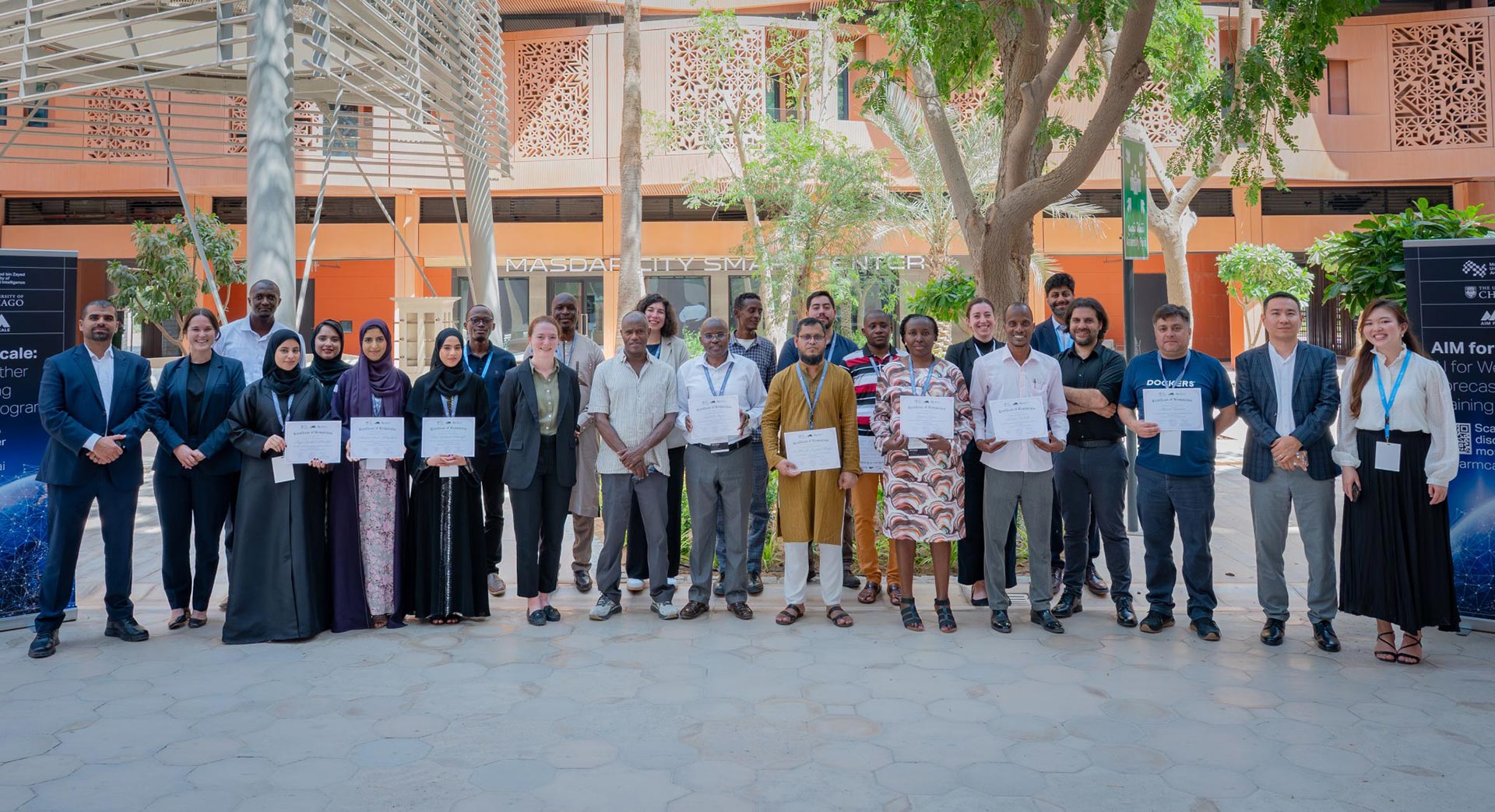
In late September, AIM for Scale convened a first-of-its-kind AI Weather Forecasting for Agriculture Training Program in collaboration with the Mohamed bin Zayed University of Artificial Intelligence (MBZUAI) and the University of Chicago (UChicago), bringing together representatives from national meteorological and agricultural agencies from Bangladesh, Chile, Ethiopia, Kenya, and Nigeria. By supporting low- and middle-income country (LMIC) governments to build their capacity to generate and deliver AI-powered weather forecasts, this program marked a pivotal step toward sustainably reaching millions of farmers with timely information to guide critical decisions affecting their livelihoods. It also underscored the importance of ensuring LMIC governments can adopt these innovations early and develop world-class national services—capabilities once limited to places like the US, EU, or Japan.
As Amir Jina, Chair of AIM for Scale’s Weather Services for Farmers Technical Panel and assistant professor at UChicago’s Harris School of Public Policy noted: “For the first time in history, there is a real prospect of democratizing access to world-leading forecasts. Low- and middle-income countries can now build services that meet the same gold standard as the most advanced nations.”
Why AI Weather Forecasts Matter
For all farmers–but smallholder farmers in particular–weather represents a key risk that can make or break an agricultural season. Yet, in many LMICs, access to timely and accurate weather remains limited with traditional forecasting systems often out of reach to meteorological agencies due to their costs. AI is opening new possibilities: faster, more precise, and more affordable forecasts that can be tailored to local conditions and tailored to farmers’ needs.
“Before this program, I didn’t know what AI really was. Now I see how it can help us improve forecasts and support farmers to produce more,” said A.K.M. Nazmul Hoque from the Bangladesh Meteorological Department.
A First-of-Its-Kind Training
The five-day program was structured around both technical and applied tracks.
Meteorological service participants learned how to run and evaluate AI models, benchmark their accuracy, and integrate them alongside conventional forecasting systems.
Agriculture ministry participants focused on translating forecasts into actionable advice, ensuring that climate information reaches farmers through extension systems, mobile tools, and advisory platforms.
In addition to the program’s organizers, sessions were led by experts from leading global institutions, including the UAE National Center of Meteorology, the World Meteorological Organization, Google DeepMind and Google Research, the European Centre for Medium-Range Weather Forecasts, AfriClimate AI, Norwegian Meteorological Institute, Rhiza Research, and Precision Development (PxD), among others.
Each participant left not only with new skills but also with a high-performance laptop, enabling them to continue running AI models in their offices back home.
Learning From Each Other
One of the most powerful aspects of the program was the exchange of experiences across countries. Participants were able to see how peers were approaching common challenges—whether it was Bangladesh’s disaster protocols to quickly coordinate evacuation activities based on flood risk alerts, Kenya’s farmer registry and planting-window tools, or Chile’s work on risk platforms that combine climate and disaster data.
As Jose Abel Echeverria Morales of Chile’s Institute for Agricultural Development put it: “The surprising thing about this week was seeing how fast AI is advancing—and how it can help us get the right message to farmers at the right time. It was amazing to learn from countries that are so different from us, yet share the same vulnerabilities.”
The training closed with a session dedicated to creating a community of practice: a cross-country network where participants can continue sharing knowledge, comparing results, and supporting each other as they integrate AI forecasting into national systems. This collaborative spirit is at the heart of AIM for Scale’s vision—building not just stronger forecasts, but stronger institutions and partnerships that ensure those forecasts reach the farmers who need them most.
Looking Ahead
This inaugural cohort—funded through a grant from the International Affairs Office at the Presidential Court of the United Arab Emirates—marks the start of a multi-year journey. By 2027, AIM for Scale aims to train a total of 30 countries to operationalize AI weather forecasting, equipping national institutions to provide more reliable, farmer-focused forecasts. Together, these efforts could reach tens of millions of farmers, helping them manage weather-related risks more effectively, make informed decisions, and strengthen their livelihoods.